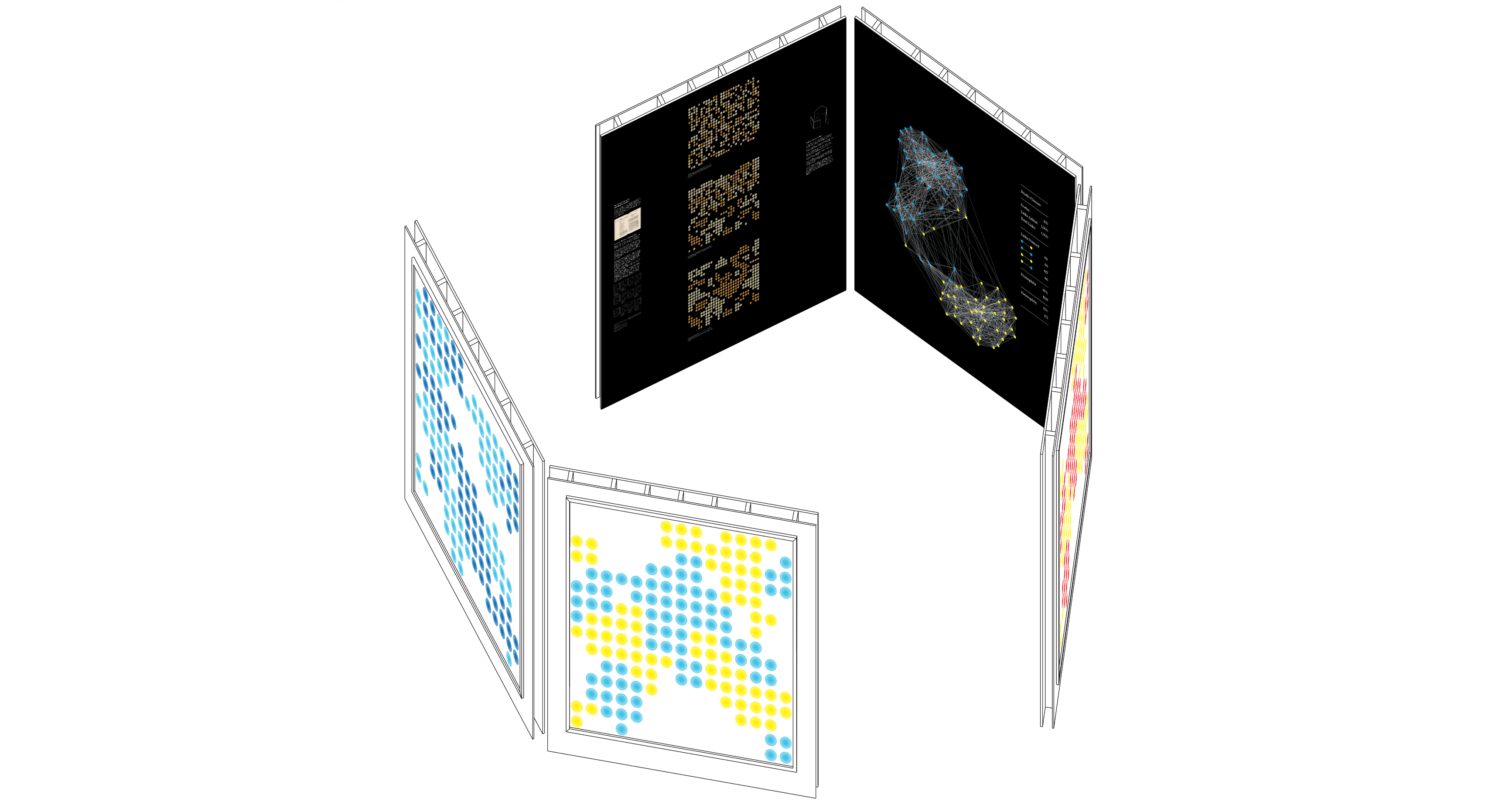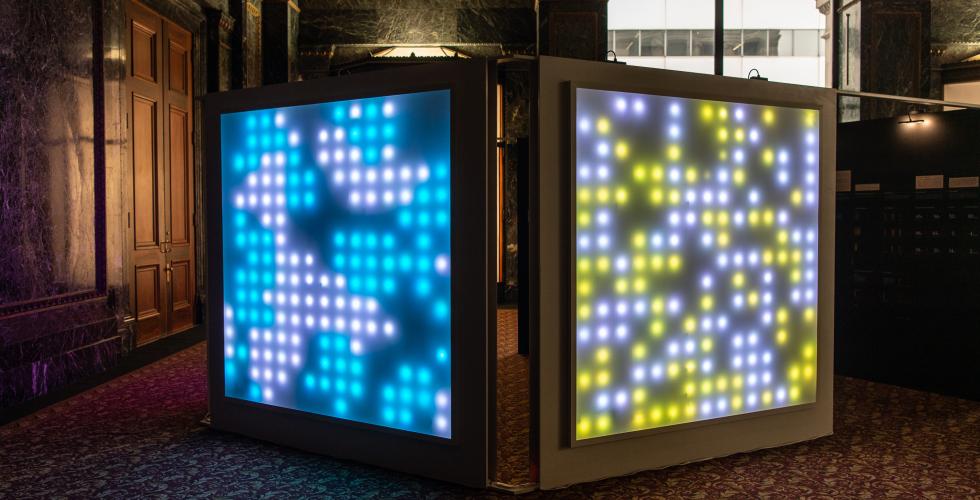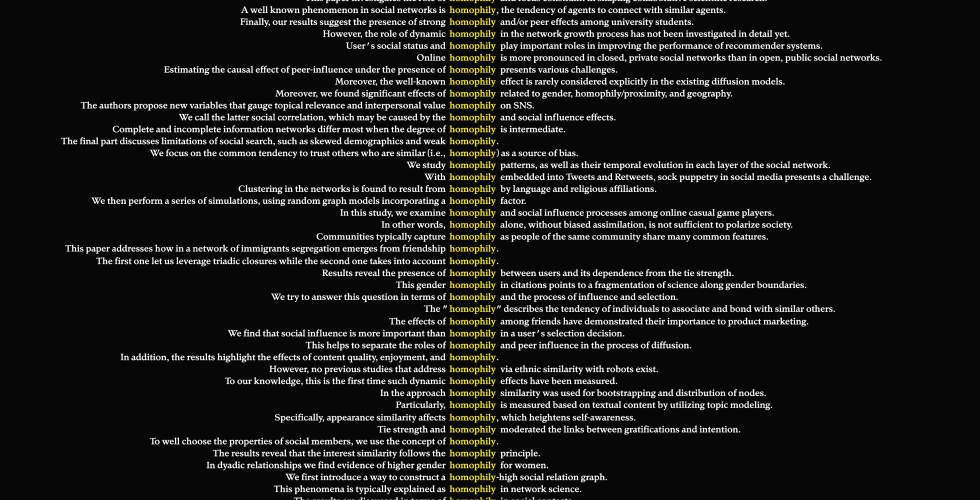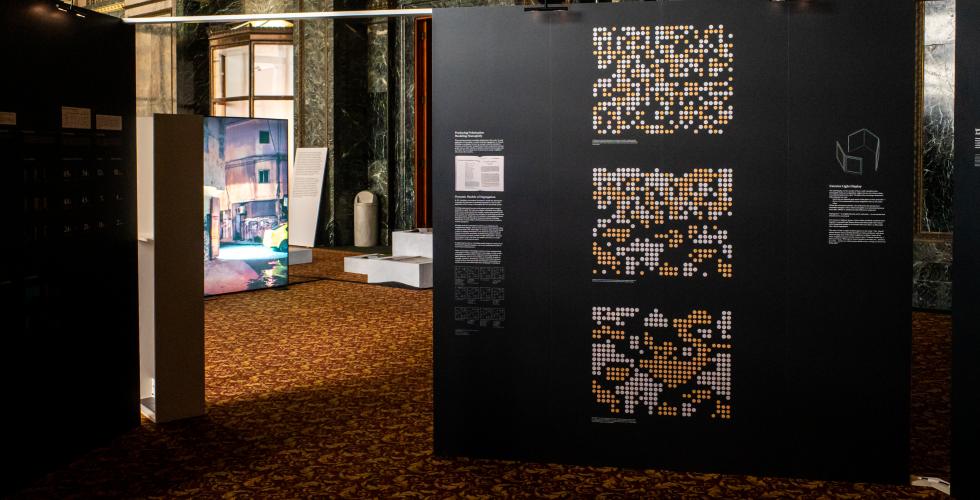Homophily: the Urban History of an Algorithm
An installation for the 2019 Chicago Architecture Biennial
The word "homophily" was coined by researchers Paul Lazarsfeld and Robert Merton in an influential 1954 study of friendships in Addison Terrace, a biracial housing project in Pittsburgh. They were suspicious of the "familiar and egregiously misleading question: do birds of a feather flock together?" They suggested that friendships form and persist not simply on the basis of shared identities but thanks to shared values and beliefs. They focused on "racial attitudes," and discovered that people with what they called "liberal" values about race were much more likely to be friends with each other, as were people with "illiberal" positions. In a quirk of statistical reasoning, they used only the survey results from white residents: the black population was so overwhelmingly "liberal" that comparison was impossible. The model of homophily – "the tendency for friendships to form between people 'of the same kind'" – was born in this conflictual urban battleground around segregation and integration.
The afterlife of the concept and its formalization has been remarkable. Today it functions as the principle underlying much of what happens in online social and economic interactions, the axiom that ‘similarity breeds connection.' What began as a description of social life has become an algorithmic rule shaping it: homophily drives targeted advertising, recommendations for purchases and viewing, the promotion of certain types of content on social media platforms over others, and the predictions about crime that guide pre-emptive policing. More or less invisibly, it guides us to people, commodities, destinations, and ideas, among other things, and is widely blamed for creating a social world in which previously-held identities and positions are reinforced and concentrated rather than challenged or hybridized.
The exhibition puts the formalization of homophily in tension with its conceptual and historical origins. The exterior of the five-walled space is covered in custom LED panels that simulate homophily and the segregation that it produces. Inside, a series of probes into the archives of Lazarsfeld and Merton uncover the history of the concept of homophily and its influence on urbanism and network science. Their archive is not simply something from the past. It speaks directly to our present, our segregated cities and our polarized platforms, where the effects of research in a housing project now reverberate at much greater scale in networks and networked cities.
On view at the 2019 Chicago Architecture Biennial September 18,2019 – January 5, 2020.
A companion essay to the exhibition is published in e-flux Architecture.
Research for this exhibition was supported by the Andrew W. Mellon Foundation, the Canada 150 Research Chairs Program, and the Columbia Graduate School of Architecture, Planning and Preservation. With thanks Leslie Gill Architect for design consultation, and to the Columbia Rare Book and Manuscript Library, Harriet Zuckerman, Robert Lazarsfeld for assistance and reproduction permissions on archival materials.

In collaboration with: Wendy Hui Kyong Chun, Canada 150 Research Chair in New Media and Professor of Communication, Simon Fraser University
Graduate Research Assistants: Alanna Browdy, Rebecca Cook, Audrey Dandenault, Tola Oniyangi, Andrea Partenio, Juvaria Shahid
Graphic Design: Studio TheGreenEyl


